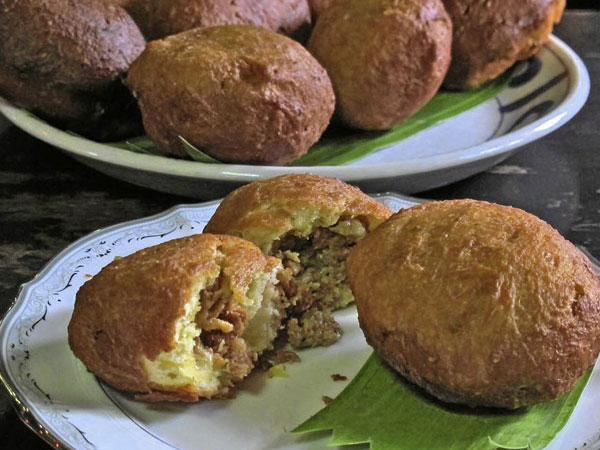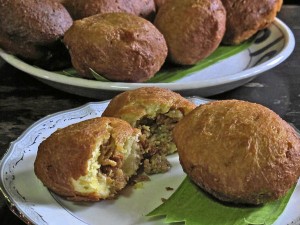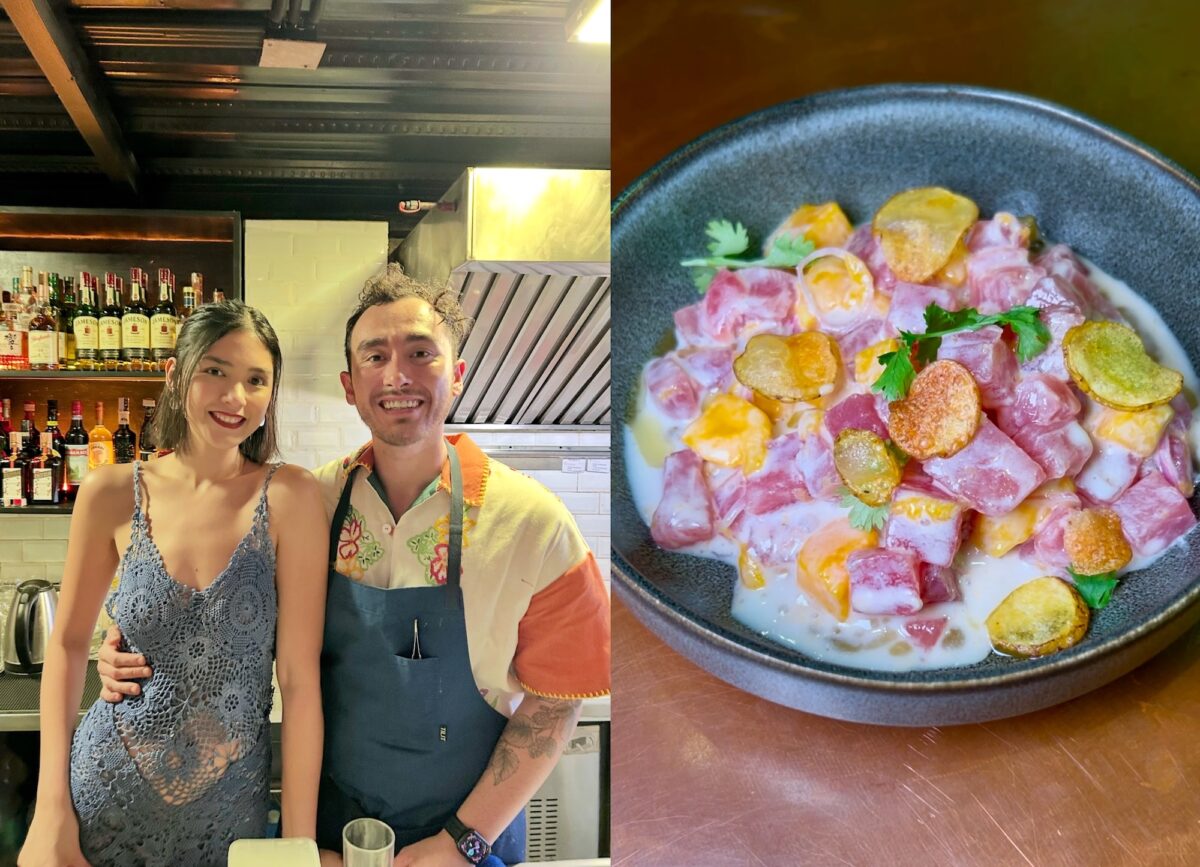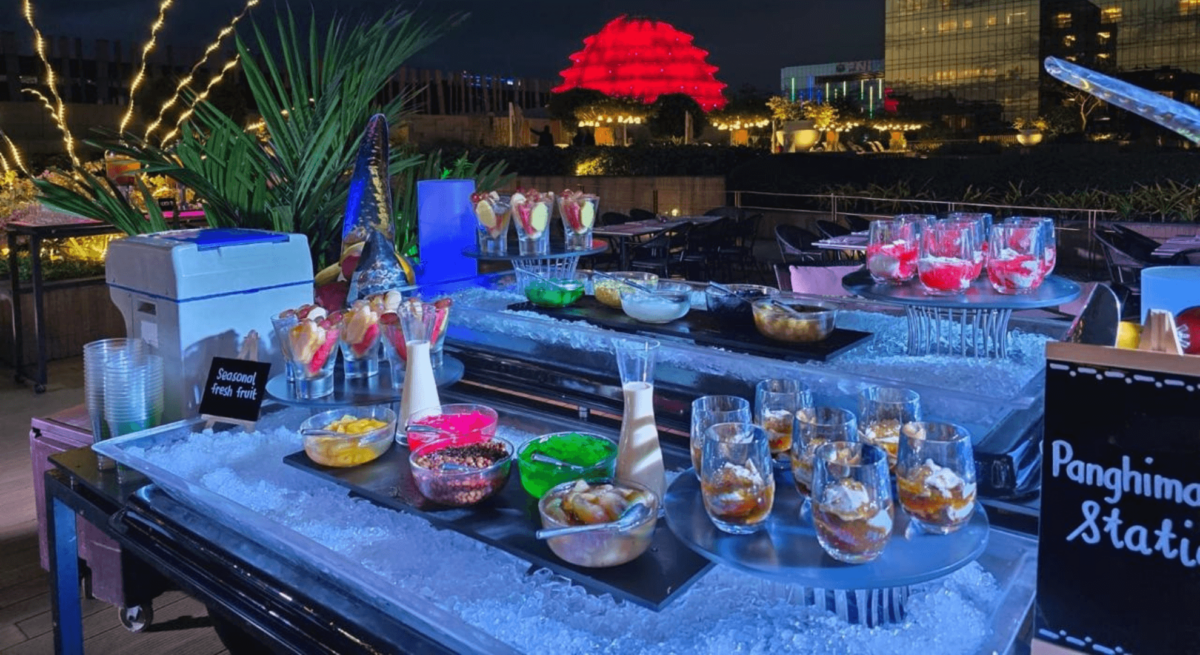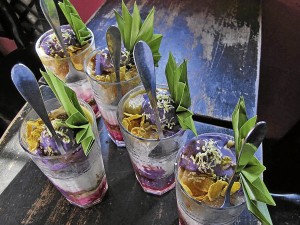
There are regional additions such as pastillas de leche in Pampanga or non-uric acid mixes that exclude the beans in Cavite. I suppose halo-halo is the best reminder for the balikbayan of home sweets in one tall glass.
In San Fernando, La Union, it was the height of this summer when we visited and the prospect of having halo-halo for merienda was welcome, indeed. Former mayor Mary Jane Ortega brought us to Halo-Halo de Iloko where she orders out the place’s specialty for her guests. But there’s nothing like having halo-halo at the place because the presentation is also a marvel.
When the concoction emerged from the kitchen, it brought a smile because at the very top sits a banana leaf shaped like a fan. Putting that aside (others kept them), we dug into the mix guessing what touched our tongue, all the while enjoying the flavors, creaminess and the cooling effect.
Xavier Mercado is the proprietor and he deconstructed the halo-halo for us. He uses ube from San Gabriel, nata de coco, corn, cornflakes, saba, yema cooked in pandan, gulaman cooked with buko juice (young coconut) and burisangsang (muscovado) as sweetener.
We should have been satisfied with the halo-halo, considering we had a heavy lunch before that. But passing by another table, we were curious about what looked like huge pan de sal pieces. Mercado called it emparedados, which turned out to be a fried bun with Vigan longganisa within. The name is Spanish for sandwich.
Mercado is a proprietor who loves to offer food for his town to enjoy. He is looking for another place for a bigger restaurant where he can have a more extensive menu. But it will certainly be in his hometown.
In Zamboanga City, Mayor Celso Lobregat took us around after dinner. And what better time than at night to visit the Shrine at Fort Pilar and then after, a walk through Paseo del Mar, a park facing the Basilan Strait and where several restaurants are located.
We stopped at Las Palmeras for a cool break where the mayor knew what we wanted after that filling dinner at La Vista del Mar, some of which were mud crabs and imbao (shells). The Knicker Bocker (sic) arrived, fresh fruits and gelatin pieces topped with strawberry ice cream.
Throughout our tour the next day, several chanted “knicker bocker,” a loud hint to have another before leaving the city that day. Little did they know that our last lunch was at the Hacienda de Palmeras, the main restaurant in the Sta. Maria district where their recent favorite dessert can be had. While the mainly Filipino food included crispy pata, pakbet and sinigang, all exceptional and filling, it was the Knicker Bocker that brought smiles to all the faces.
<strong>Hot items</strong>
From cool tall glasses, we shift to hot items. First, hot pebbles on the beach of Luna town in La Union, which was a marvel because it was the first time I had seen a seashore covered with small smooth and colorful stones, said to be brought to other points in the country and even exported abroad as decorative pieces. This might be where my “pebble washout” effect on my balcony floor came from.
The town is named after the Luna family, whose ancestral home is there, though all that remains are the brick fence and a small part of the house.
The other hot place in Luna was at Nacionales bibingka owned by Rosita and Monsignor Nacionales. The visit afforded us the chance to see how the batter made of malagkit (glutinous rice), cheese, eggs and milk is made smooth in an improvised mixer. The batter is then poured into containers of different sizes and baked. The consistency of the Nacionales bibingka is similar to that of the Vigan bibingka, sticky, thick and hefty.
And again from Zamboanga City, the hot item was rebusao, which has a fancy name but is really just saba bananas cut lengthwise in small pieces, then fried while sprinkled with brown sugar. It was a simple dessert at La Vista del Mar, but we fought for each piece at our table and were noisy enough to make our hosts offer as their plate of rebusao. The exhilarated mood we were in must have been because we felt good about our trip down South, a mood Zamboanga wants their visitors to have while at the city or at any of their three provinces—del Norte, del Sur or Sibugay.
Before we left, we were granted a sight of colorful vintas sailing the strait, a Zamboanga local color that we’ve only seen in postcards before. Priceless.
E-mail [email protected].

